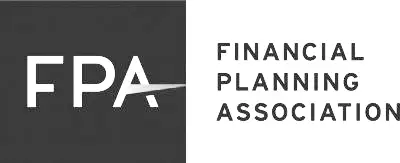May 29th is National College Savings Day. However, plenty of Americans don’t know about 529 plans or may not fully understand their benefits. As a college savings vehicle that is available to anyone, regardless of income levels, 529 plans should be a consideration for those with a goal of funding education for a loved one. What better way to recognize 5/29 than to refresh the top benefits of 529 plans and how to use them:
Step 1: Picking and setting up a plan
You should know that you aren’t limited to using your state’s 529 plan. You can invest in almost any state’s plan, and in most plans your choice of school is not affected by the state plan you choose. Meaning that you can live in North Carolina, use Virginia’s 529 plan, and choose a college in Florida giving you flexibility.
The account owner, usually the donor and/or parent, stays in control of the account which allows you to ensure the funds are used for what they are intended for – education. This is unlike some custodial accounts like at UTMA where the child takes control of the assets once they reach legal age.
Step 2: Funding
Not only can parents open 529s for their own children to save for college, but friends and relatives can help with education funding by giving gifts of contributions to an existing 529 owned by a parent or guardian. Another option is to open a new 529 for children in your life such as a grandchild, godchild, or niece or nephew.
In some states, those contributions can be deducted from state income taxes providing an extra benefit. Unfortunately, North Carolina is not one of those states. You can deposit up to $15,000 per year per individual to qualify for the annual special gift tax exemption. A perk specific to 529 plans, individuals can also frontload five years’ worth of contributions without paying gift taxes. That would mean you could contribute 5 x $15,000 or $75,000 in one year instead of spreading over five years. This could be an attractive option for those contributing for older children, those wanting to begin using funds right away, or those with an interest in minimizing future estate taxes.
Step 3: Using your 529 funds for education
The funds in your 529 account can be invested and the earnings are tax deferred and withdrawn tax free if used for qualified education expenses.
For college and universities qualified education expenses would include tuition, fees, books, supplies, equipment, computers and sometimes room and board expenses to be withdrawn without tax implications.
In recent years there have been some additions to the tax-free withdrawal possibilities. With the Tax Cut and Jobs Act of 2017 the IRS has also added use of 529 plans for tuition for public, private or religious school to be withdrawn tax free up to $10,000 a beneficiary per year.
The most recent update to this benefit came with The SECURE Act of 2019 with allows you to make tax free distributions to repay student loans up to $10,000 a borrower (a lifetime limit) for the beneficiary.
Step 4: If you have leftover money in your 529 after college
While you have plenty of options to use the funds without tax implications you may run into times when you’ve overfunded your account due to scholarships, grants or a change in college plans. Typically, you’d have to pay a penalty, currently 10%, and taxes on the earnings if not withdrawn for the education purposes above. If considering a non-qualified withdrawal, know you have other options to explore first.
To avoid paying both taxes or penalty on the leftover funds you can:
- Change the beneficiary to another qualifying family member and use for their education
- Change the beneficiary to yourself and use it to further your own education
- Hold the funds in the account if graduate school is a consideration for the beneficiary
- Roll them over to a 529 ABLE account, a special savings account for disability related expenses
If those options don’t fit your situation you can avoid the penalty but pay the income tax on the earnings by:
- Withdrawing the amount the beneficiary receives in a tax-free scholarship
- Withdrawing the funds if the beneficiary attends a U.S. Military Academy
- Withdrawing the balance as a result of death or disability of the 529 beneficiary
Ask your financial advisor if a 529 plan is the right tool for you and how it can best fit into your financial plan.




